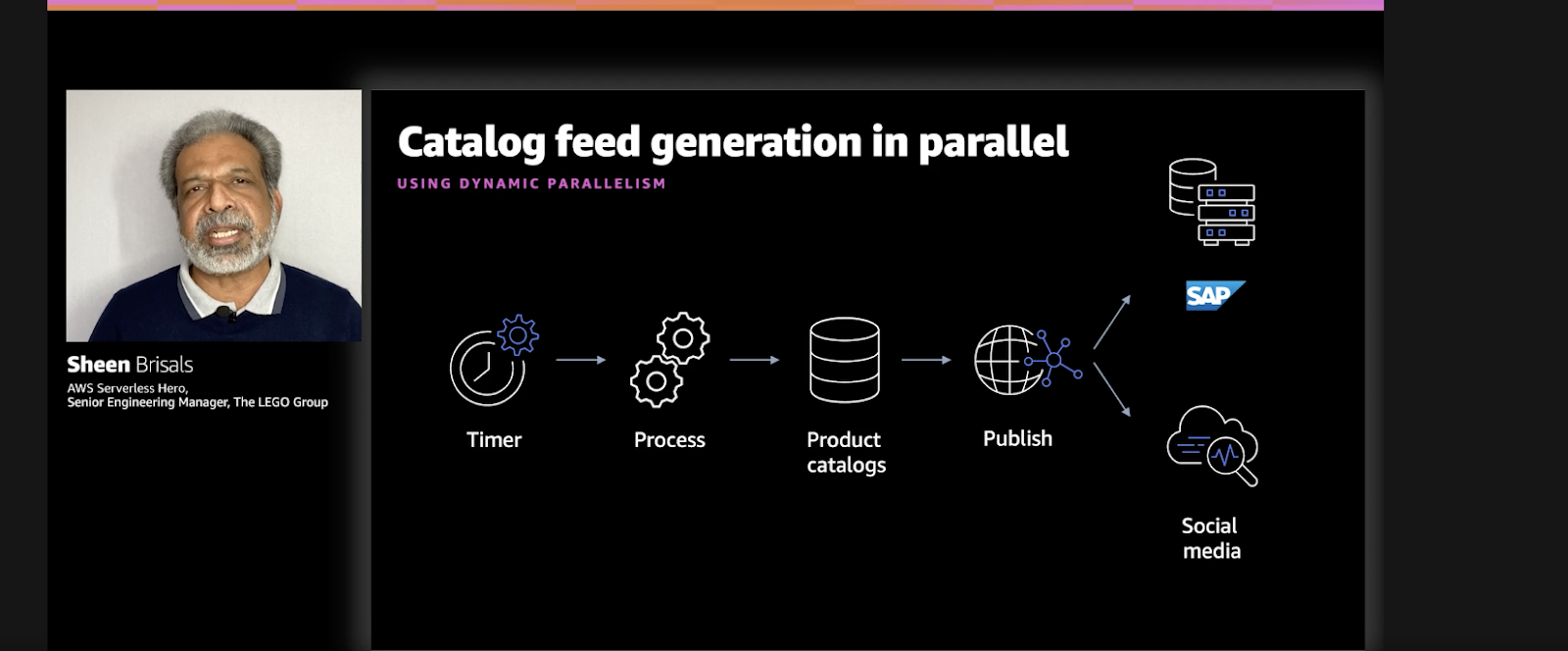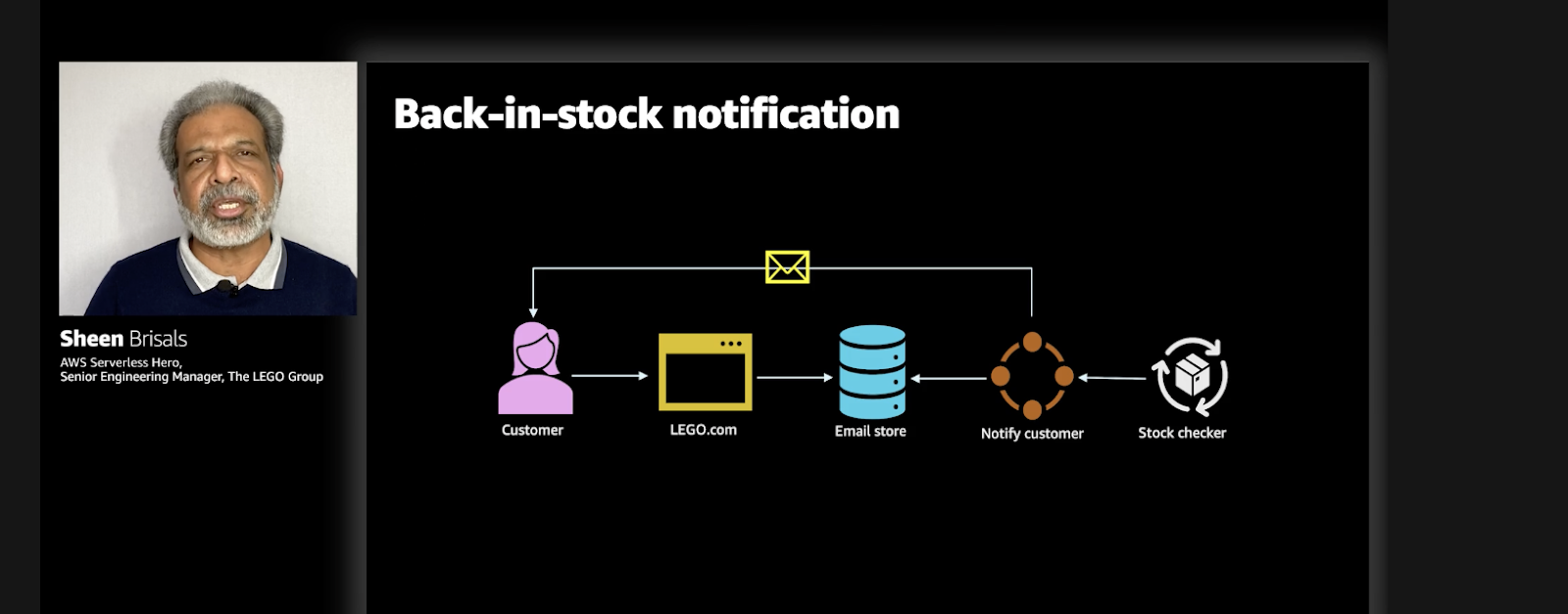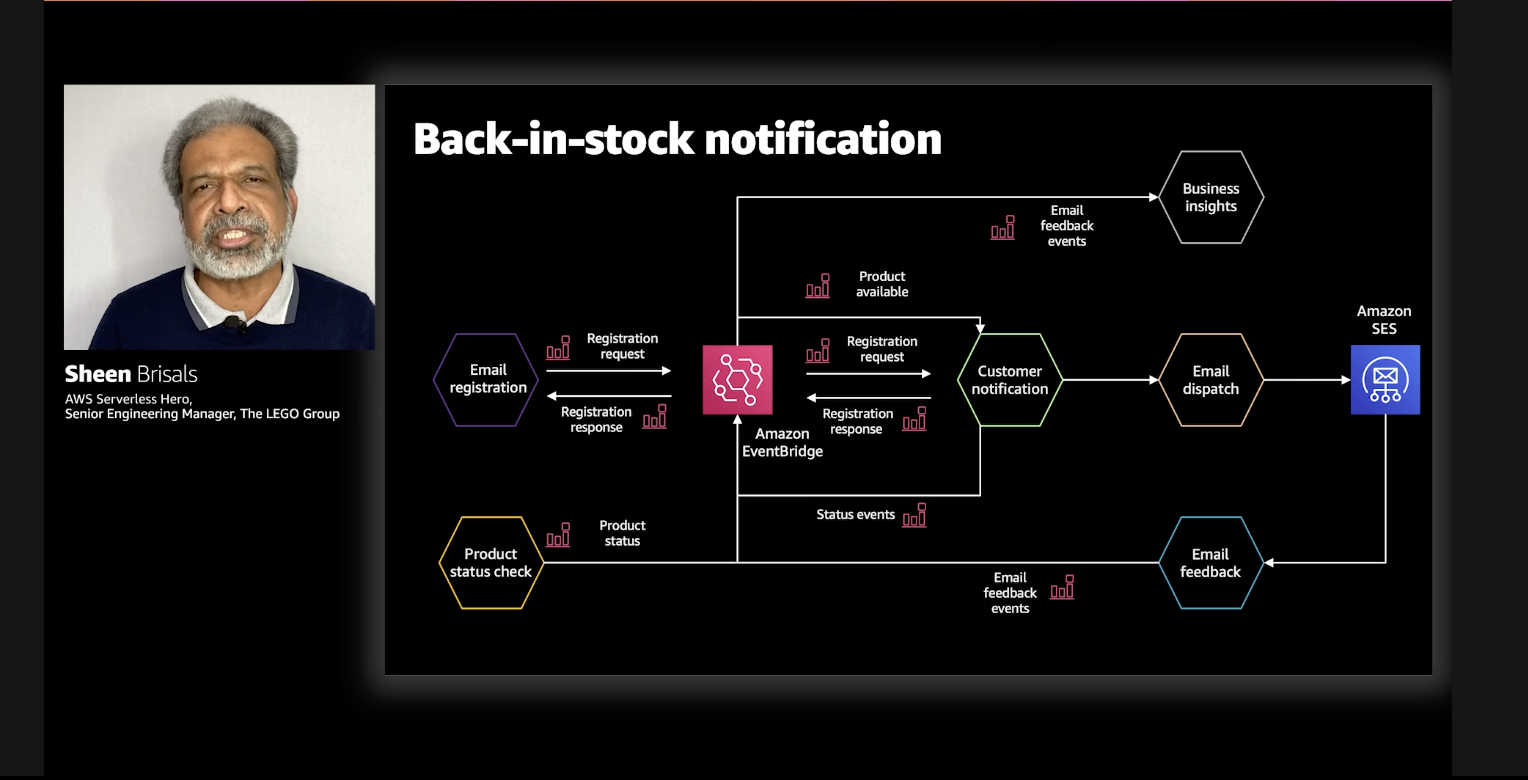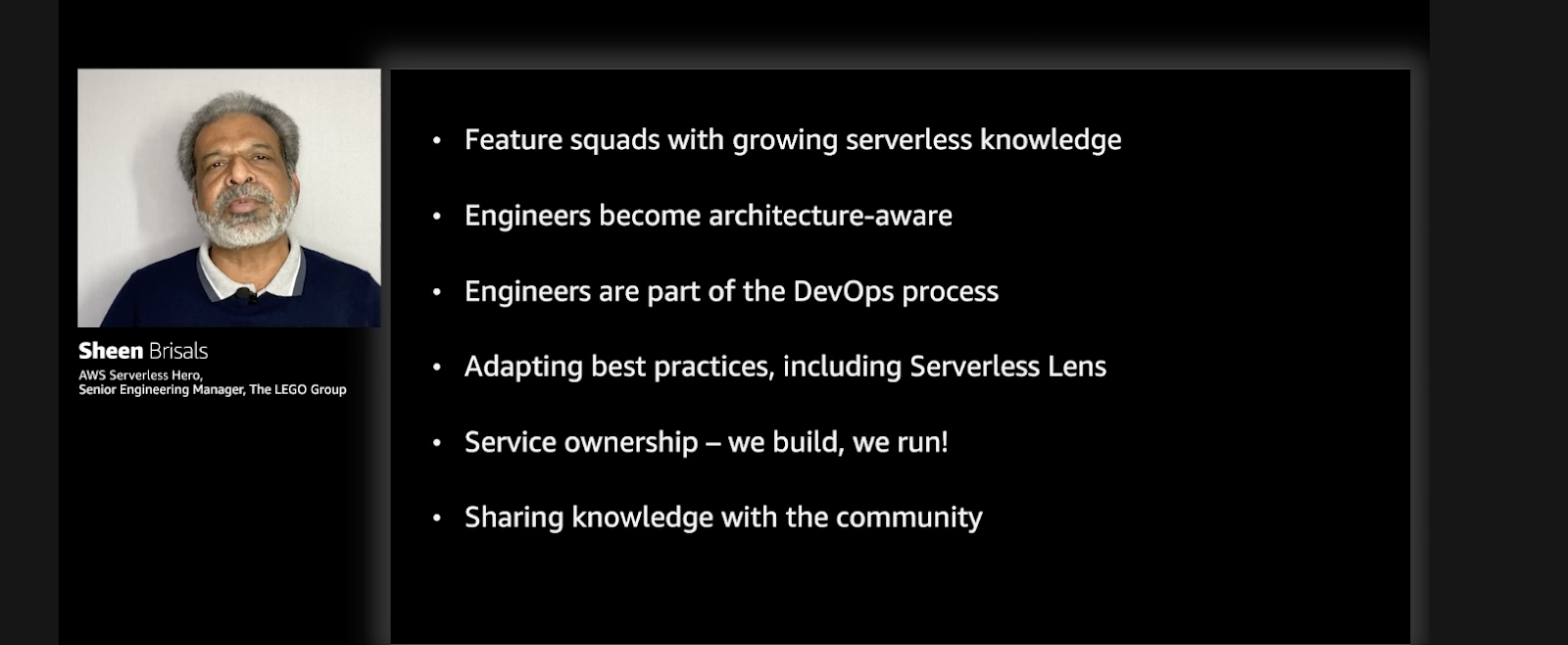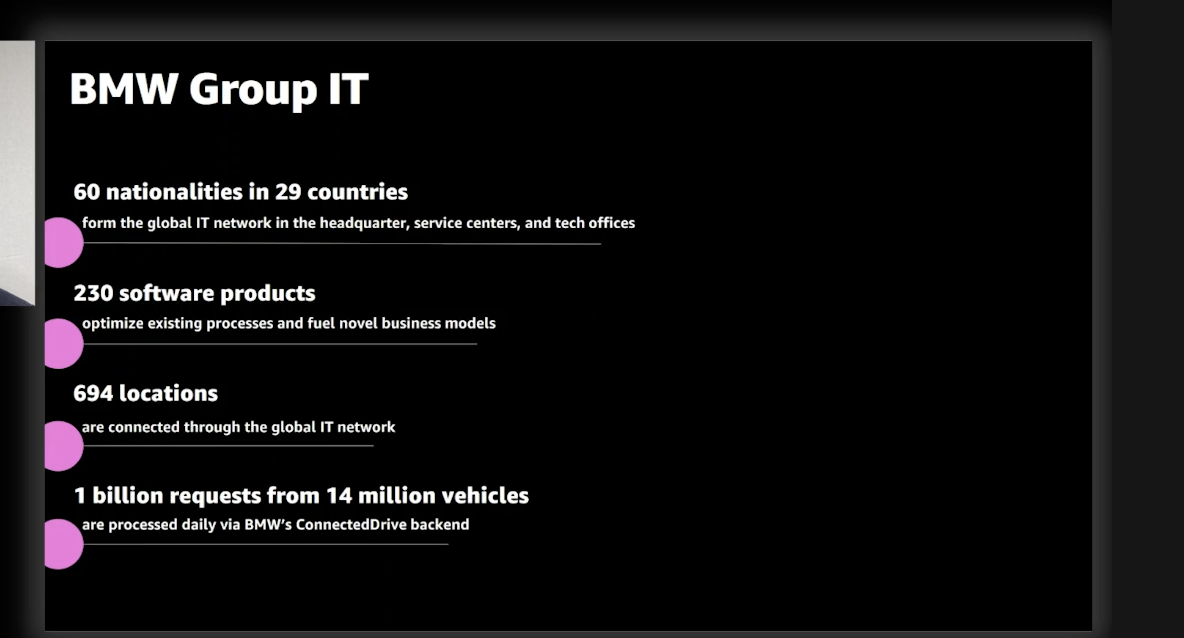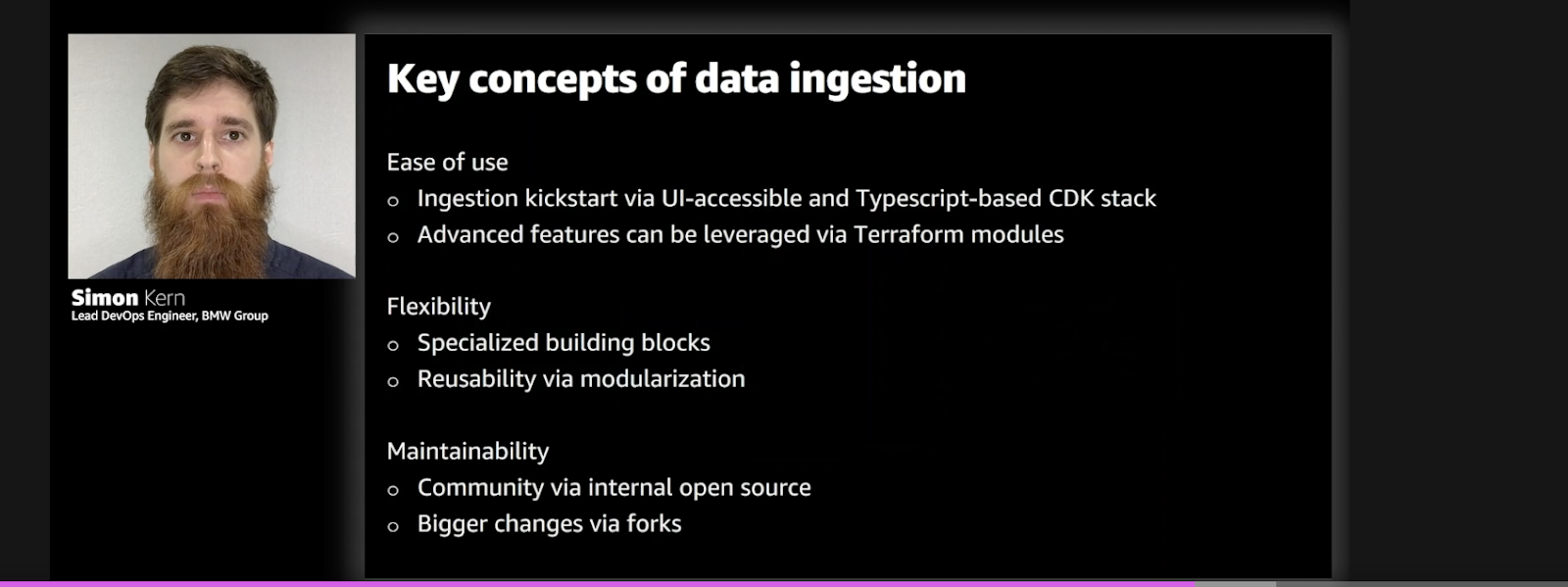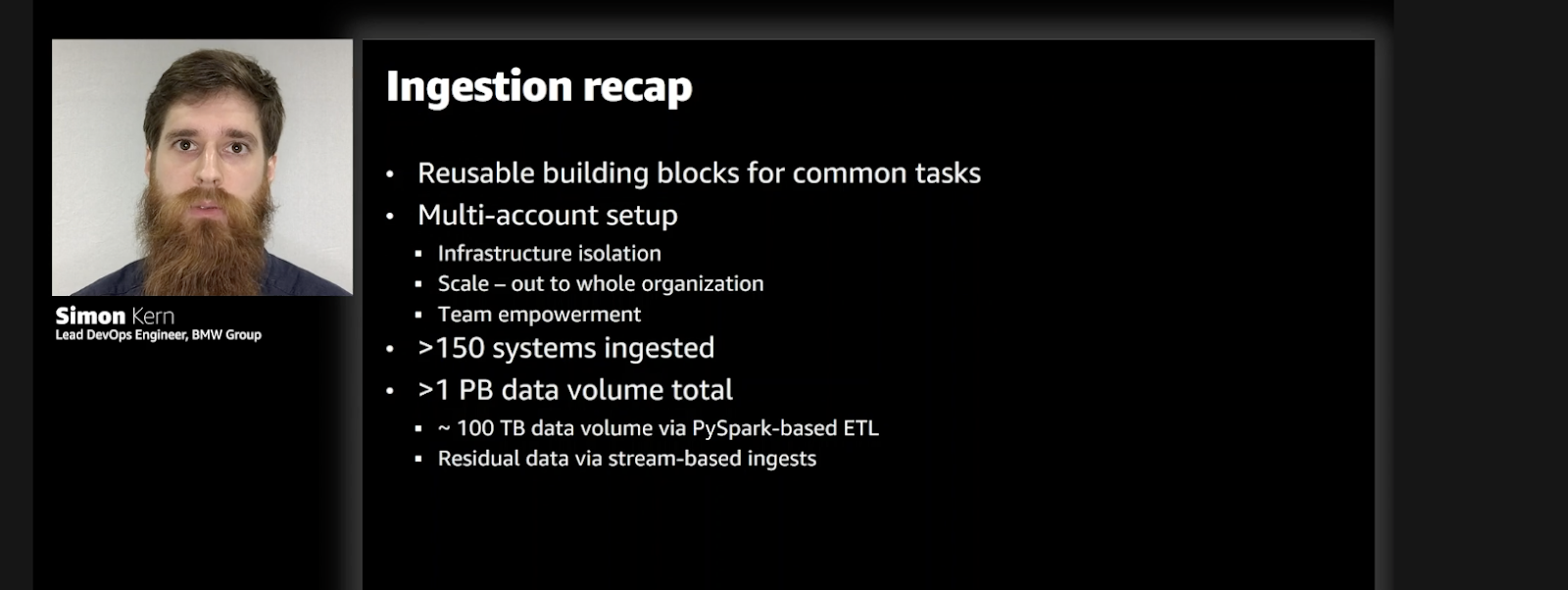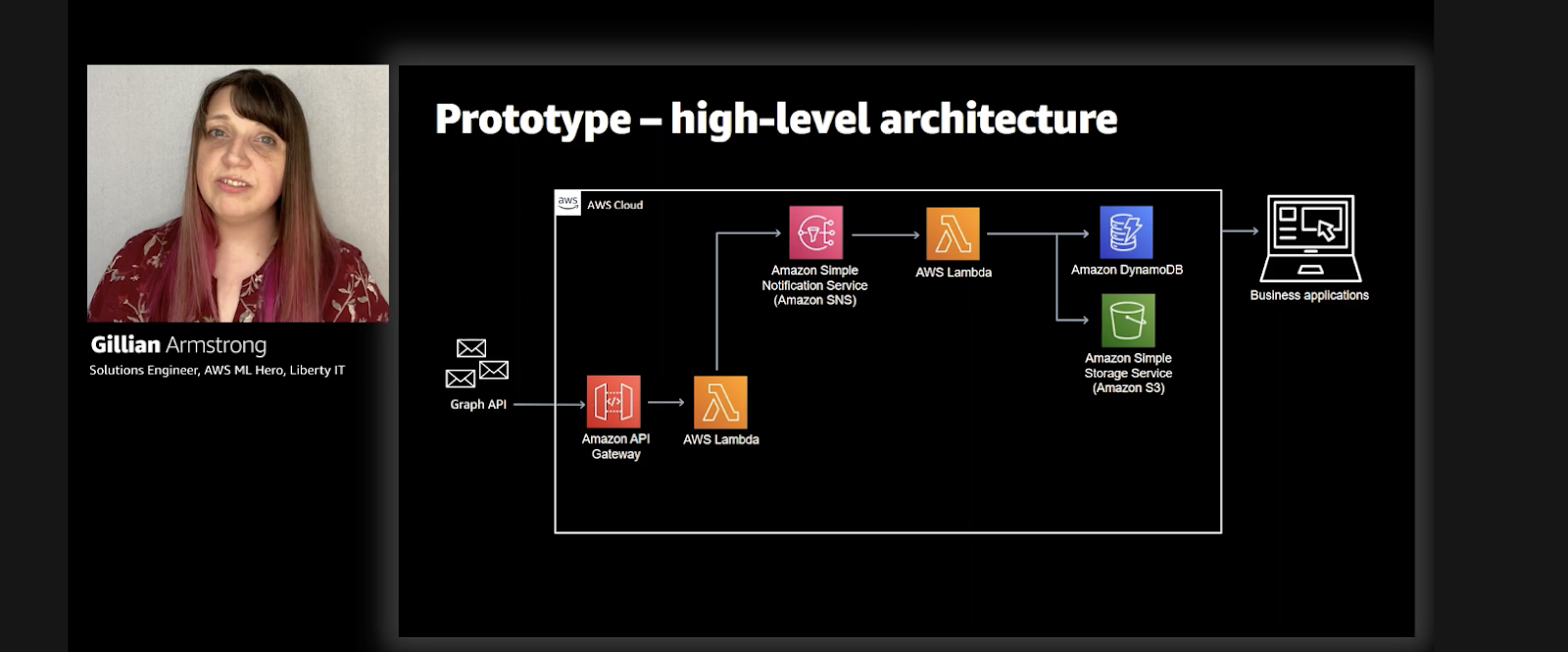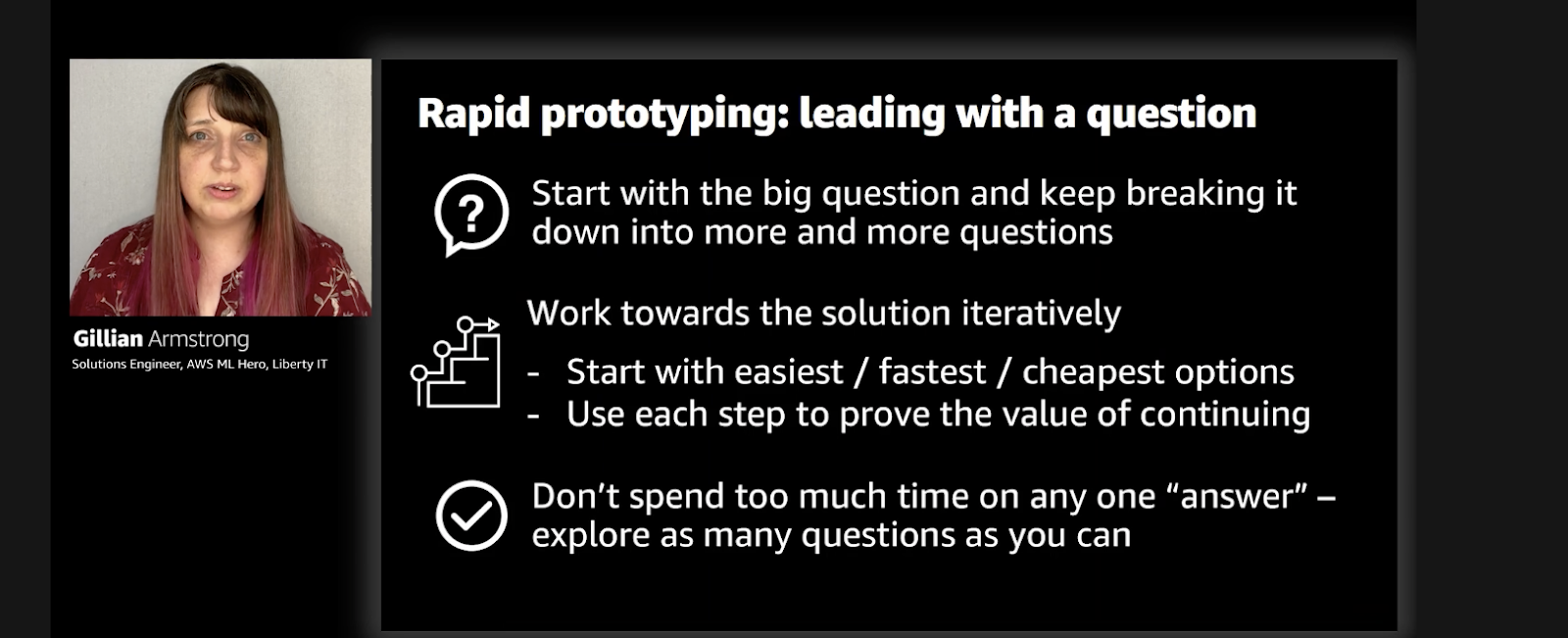re:Invent 2020 week 1: The Year of Serverless
LEGO, BMW, Liberty Mutual, and Equinox all talk Serverless Success

The first keynote is over, the talks have started, and the AWS Heroes all got to feel motion-sick but appreciated in their AWS-supplied VR helmets.
Here are my week 1 thoughts:
Throughout the keynote it was clear that serverless is here to stay. One detail stood out to me above all others: Nearly half of all new compute workloads in Amazon in 2020 were Lambda based.
During Andy Jassy’s keynote, a veritable wall of major customers that use Lambda. It may not be that enterprises use Lambdas solely, but serverless is a part of many teams’ microservices strategy.
Will the earth of 2030 be criss-crossed with supersonic jet lines? I’m not certain of that but it was amazing to see how Boom is designing a new jet fuselage for a fraction of the old cost, using a combination of serverless and high-performance EC2 instances.
Serverless at the LEGO group
Danilo and Sheen are incredibly smart engineers and have done great things at the LEGO group. They’re also both great at sharing their knowledge. From the talk abstract: After experiencing scaling issues on Black Friday, the LEGO team fully refactored its monolith to serverless microservices on AWS.
Last year LEGO shared how they migrated their website to Serverless. I can’t help but see the comparison between small components of a stack snapping together and the construction of LEGO bricks. Some highlights:
- This year they are accelerating even more with Serverless.
- Team Growth + Business Value has all increased due to this acceleration.
AWS Step Functions - helps to put the workflow in a better place.
Why this matters: serverless means combing different services to implement better patterns to make the application perform better.
With AWS EventBridge the team was able to build a back in stock notification
(You can see AWS EventBridge right in the middle)
The promise of EventBridge means no more reliance on a Lambda to do the routing of events between other Lambdas.
Choreography vs Orchestration:
Choreography is sending the right event the right handler, e.g. with EventBridge. Orchestration is for coordination inside a microservice, e.g. with Step Functions.
Sheen wrote about how great cloud engineering teams are grown, not built. I love his advice here.
A key point to the scalability success story was how it improves business value. It improves trust and reduces toil for your teams, and gives your team the flexibility to deliver business value.
How BMW Group uses serverless for a data-driven ecosystem
Simon Kern dived deep into how the company is leveraging AWS serverless capabilities for delivering ETL functions on big data in a modularized, accessible, and repeatable fashion. He also provided insight into the next steps of the journey.
I’m always surprised about how any successful enterprise has a massive IT footprint. It takes a lot of computing to make cars! BMW has 230 software products and 694 locations across 29 countries and a billion requests from 14 million vehicles! 🤯
Data ingestion is a consideration for any analytics/data gathering project.
It’s key to be able to let non-experts to ingest data for analysis. If you limit all steps of analysis to technical experts then analysis and stakeholders will never truly engage with your toolset!
The fact is that data analytics, which seems like such a technical field, is really about the human factor. The only way to get high quality data sets is if everyone from the field to the boardroom has some level of power to ingest new information. Of course it’s critically important that everyone has access to query analytics.
If we can’t get the benefits of analytics out to our whole business, then we’re not really delivering business value.
Using AI to find email insights at Liberty Mutual
Gillian Armstrong at Liberty Mutual, an AWS ML Hero, gave a talk on an ML workflow for finding insights from email. The Liberty Mutual team built a system that can monitor emails and automatically extract key information from complicated unstructured data like email text and attachments.
Notice How everything is Serverless in the stack :)
I absolutely loved her thoughts on prototyping and iteration. The smaller pieces you can get at of the "big question", the faster you can work on the components.
This again reminds me of Sheen Brissals’ essay on the serverless development mindset: that it’s critical to break up problems into smaller pieces to be able to develop effective microservice architectures. If you take tiny tiny bits of functionality it’s so much easier to say ‘here’s how a Lambda could do this.’
An agility workout: how serverless helped Equinox handle disruption
I really loved this abstract: As COVID-19 spread, Equinox Media recognized the need to fast-track the launch of Variis, its online fitness streaming platform. By developing Variis from the ground up with a cloud-native infrastructure, Equinox Media was able to accelerate and quickly scale up to meet demand.
Built to pursue fitness every day - Variis - powers two platforms and was built in just 6 months. I really don’t think there’s a way to do this in a way that scales without serverless technologies.
No matter how long I work with AWS it still amazes me how you can use tools like AWS Glue, Amazon Athena, and Amazon Kinesis to build a fully functional application that can run at scale.
The year of serverless has come
It feels like in 2019 we were still waiting for serverless to ‘take off.’ But at a hackathon in December 2019 I saw every single team turn in a stack that involved an AWS Lambda, not to speak of serverless database tools, routing layers, and queueing. In 2020, along with the maturity of serverless tooling, the grim realities of quarantine meant that even more resource went into building completely cloud-based architectures.
In the rest of re:Invent and the year to come, serverless will be part of the conversation from the start. Teams moving to the cloud will start with serverless, and teams who need to build services quickly will rely on serverless tools. #ServerlessForEveryone
Related posts






